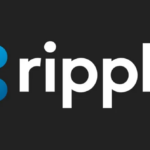Ethereum Smart Contracts Integrated into Ripple’s Ledger for Enhanced Functionality

Ripple recently made a significant announcement regarding the integration of Ethereum-compatible smart contracts into its XRP Ledger, a move that could revolutionize the network’s capabilities and enhance the value of XRP.
Smart contracts play a crucial role in modern blockchain technology by enabling the automation and execution of complex transactions without the need for intermediaries. Ripple’s decision to incorporate compatibility with the Ethereum Virtual Machine (EVM) into its XRP Ledger opens up a plethora of new possibilities for developers and users alike.
These new smart contracts will operate on a specially developed sidechain rather than directly on the main ledger, ensuring the security and integrity of the primary system while expanding its functionalities. By utilizing tools and programming languages familiar in the Ethereum ecosystem, developers can seamlessly transition to leveraging these new capabilities.
The introduction of Ethereum smart contracts not only boosts the flexibility of the XRP Ledger but also paves the way for the implementation of more sophisticated applications such as decentralized exchanges (DEX) and custom tokens. This advancement aligns Ripple more closely with other blockchains like Ethereum and Binance Smart Chain that have successfully integrated similar solutions.
The integration of Ethereum smart contracts carries significant implications for Ripple and its native token, XRP. Beyond being a technological upgrade, this strategic move presents an opportunity to enhance the fundamental value of XRP. By expanding functionalities through smart contracts, Ripple aims to attract new developers and projects, potentially driving up demand for XRP.
Despite facing challenges in the cryptocurrency market for much of the year, XRP has seen a positive impact following the announcement. The price of XRP has already risen by 2.3% in the last 24 hours, surpassing the $0.56 mark. This uptrend could signal the beginning of a positive trajectory if the integration of smart contracts leads to increased adoption of the XRP network.
Ripple’s objective with this innovation is to bolster the network’s presence in key markets, particularly in Asia, while eliminating single points of vulnerability. This strategic expansion is geared towards ensuring that the XRP Ledger remains competitive and relevant in a rapidly evolving market landscape.
The cryptocurrency community has shown interest in the announcement, although questions linger about the long-term impact of this integration on the XRP ecosystem. Concerns revolve around maintaining a balance between expanding functionalities and ensuring network security, especially given the potential vulnerabilities that smart contracts may introduce if not implemented correctly.
Ripple has underscored the importance of transparency and security in designing the EVM sidechain, emphasizing that all necessary measures will be taken to safeguard the new smart contracts and prevent any compromise to the main ledger’s stability.
Looking ahead, the integration of Ethereum smart contracts could unlock new opportunities for Ripple not only in terms of XRP adoption and usage but also in solidifying its position within the broader blockchain ecosystem. With the capacity to support more advanced decentralized applications, Ripple stands to attract increased network traffic, ushering in new prospects for growth and development.



